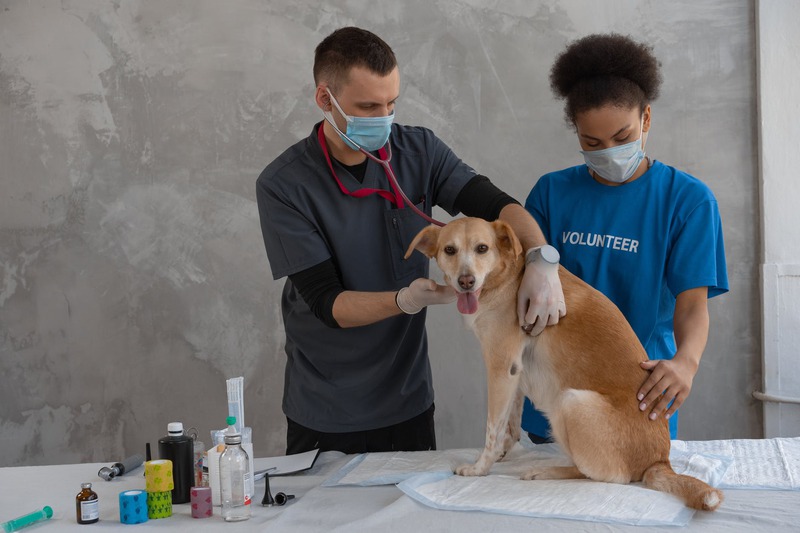When our beloved furry friends undergo surgery, it’s only natural for us as pet owners to be anxious and concerned. Postoperative care for pets is a significant part of the surgery process, and knowing what to expect can help alleviate your worries. This recovery period is crucial for healing and determining the overall success of the surgery. Moreover, the prospect of cold laser therapy for pets might seem daunting to some, but this non-invasive approach to postoperative treatment can be highly beneficial. Let’s delve into the aftermath of pet surgery and the adoption of non-invasive treatments.
What to Expect After Your Pet’s Surgery
The postoperative phase can be quite challenging for pets and their owners. However, being well-prepared can make a big difference. Every pet is unique and responds differently to surgery. Some pets can bounce back quickly, while others may need more time and care.
1. Physical Changes
Following surgery, your pet may experience various physical changes, including:
- Swelling and Bruising: Swelling and bruising around the surgical site are common and can take a few days to subside. It is usually part of the normal healing process.
- Incision Site: Depending on the type of surgery, your pet may have stitches, staples, or surgical glue to close the incision. Keep a close eye on the site to ensure it remains clean and doesn’t show signs of infection.
- Loss of Appetite: It’s not unusual for pets to have a decreased appetite in the first few days after surgery. This can be due to anesthesia, pain, or stress. Offer small, easily digestible meals, and consult your vet if the loss of appetite persists.
- Lethargy: Your pet may be more passive and less active than usual as they recover. This is a natural response to the surgery and the effects of anesthesia. Provide a quiet, comfortable space for your pet to rest.
2. Behavioral Changes
Surgery can cause behavioral changes in pets as they cope with the recovery process:
- Restlessness and Anxiety: Some pets may feel restless or anxious, especially during the initial recovery phase. Provide a calm and secure environment to help them feel more at ease.
- Disorientation: The effects of anesthesia can cause disorientation, leading to temporary confusion and instability. Make sure your pet has a safe space to move around without the risk of injury.
- Avoiding Interaction: Your pet might seek solitude and avoid interaction, preferring to rest quietly. Respect their need for space and allow them to recover without disturbance.
- Grooming Changes: Depending on the surgery location, your pet may have difficulty grooming themselves. You may need to assist in cleaning and grooming, especially if the incision site requires monitoring.
3. Pain Management
Your veterinarian will likely prescribe pain medications to manage postoperative discomfort. Follow their instructions regarding dosage and administration to ensure your pet remains comfortable throughout their recovery.
4. Postoperative Instructions
Your vet will provide detailed postoperative care instructions. These may include wound care, medication schedules, dietary guidelines, and activity restrictions. Follow these instructions diligently to promote a smooth and successful recovery.
5. Restricted Activity
Depending on the surgery’s nature, your pet may need to avoid certain activities during the healing process. Common restrictions include:
- No Jumping: Pets should refrain from jumping on furniture or using stairs, as this could strain the surgical site.
- Leash Walking Only: For certain surgeries, leash walking may be the only form of exercise allowed initially.
- Limited Outdoor Activities: Avoid letting your pet roam freely outdoors, especially in unfamiliar or potentially hazardous areas.
6. Follow-Up Veterinary Visits
Your veterinarian will schedule follow-up appointments to assess your pet’s progress and remove stitches if necessary. Attend these appointments as scheduled, even if your pet appears to be recovering well.
7. Monitoring for Complications
Keep a close eye on your pet’s condition during the recovery period. Watch for signs of infection, excessive swelling, bleeding, or any other concerning symptoms. If you notice anything unusual, contact your veterinarian promptly.
For a closer analysis and meticulously managed recovery plan, it’s recommended to visit Plainfield Animal Hospital or similar facilities which offer extensive post-surgery care. They are an example of a comprehensive animal hospital that has a dedicated team well-trained in handling these situations and ensuring your pet’s steady recovery.
Cold Laser Therapy Post-Surgery
Along with these established procedures, cold laser therapy for pets is a growing popular method. Wondering what that is?
- Non-Invasive Treatment: Cold laser therapy is a non-invasive approach and painless treatment method for pets. It doesn’t require surgical incisions, needles, or anesthesia, making it a safe and stress-free option for post-surgery recovery.
- Accelerated Healing Process: Cold laser therapy can significantly speed up the healing process after surgery. The specific light wavelengths in the therapy penetrate deep into the tissues, promoting cellular regeneration and enhancing the body’s natural healing mechanisms.
- Pain Management: One of the primary benefits of cold laser therapy is its ability to manage pain effectively. The therapy can relieve postoperative discomfort by stimulating the release of endorphins, the body’s natural pain-relieving chemicals.
- Reduced Inflammation: After surgery, inflammation at the surgical site is a common occurrence. Cold laser therapy can help reduce inflammation by increasing lymphatic drainage and promoting removing excess fluid and waste products from the area.
- Improved Blood Circulation: Cold laser therapy enhances blood circulation in the treated area. Improved blood flow brings essential nutrients and oxygen to the tissues, facilitating faster healing and tissue repair.
- No Downtime: Unlike some surgical procedures that require a significant recovery period, cold laser therapy has no downtime. Pets can resume their regular activities immediately after the treatment, contributing to a quicker overall recovery.
- Customized Treatment Plans: Each pet’s condition and response to cold laser therapy may vary. Veterinarians can tailor treatment plans to suit the individual needs of the pet, ensuring optimal results.
- Non-Pharmaceutical Approach: Cold laser therapy provides a drug-free alternative for pain management, reducing the need for additional medications and potential side effects.
- Short Treatment Sessions: Cold laser therapy sessions are typically short, ranging from a few minutes to around 20 minutes, depending on the specific condition and treatment area. This makes it a convenient option for pets and their owners.
- Multiple Treatment Sessions: While some pets may experience immediate improvement after the first session, multiple treatments are often required to achieve the full therapeutic benefits. The frequency and number of sessions will depend on the pet’s condition and response to treatment.
- Comfortable and Relaxing: Most pets find cold laser therapy to be a soothing experience. The therapy is generally painless and doesn’t cause discomfort, contributing to a positive treatment experience for your furry companion.
- Versatile Application: Cold laser therapy can be used for various post-surgery conditions, including incisions, soft tissue injuries, orthopedic procedures, and wound healing. It is also beneficial for managing chronic conditions such as arthritis.
- Safe and Well-Tolerated: Cold laser therapy has been widely used in veterinary medicine for many years with a strong safety record. It is well-tolerated by pets of all ages, breeds, and sizes.
- Complementary to Other Treatments: Cold laser therapy can be used with other post-surgery treatments, such as medications or physical therapy, to enhance the overall recovery.
Conclusion
The postoperative phase is a pivotal part of your pet’s journey toward recovery. By understanding what to expect and how to monitor your pet’s recovery, you empower yourself to provide the best care possible. Combining this with innovative treatments like cold laser therapy can help ensure a swift and more comfortable recovery for your loved companion. Don’t hesitate to contact professional help managing your pet’s recovery. As pet owners, our best contribution to their well-being lies in understanding their conditions and seeking the best help.





